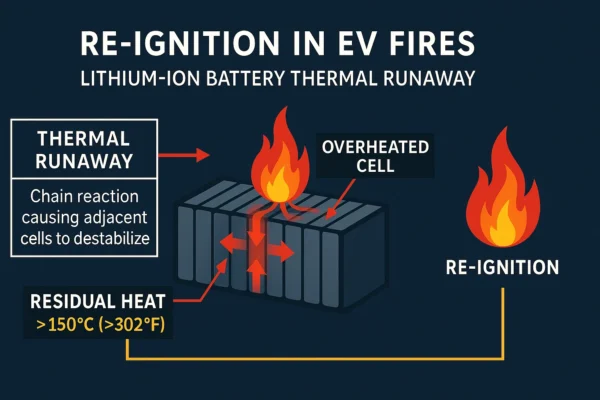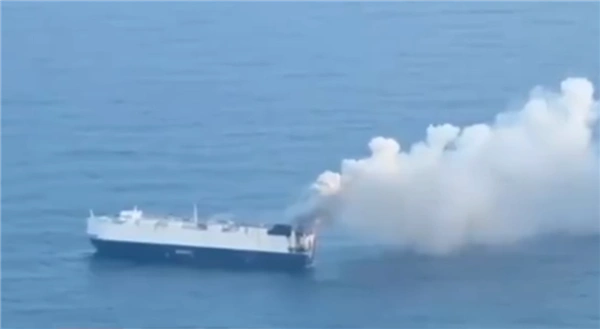In hazardous industries such as offshore oil and gas, petrochemical refineries, and LNG facilities, performing hot work poses a significant risk of fire and explosion. Traditional safety measures—such as fire-resistant blankets and barriers—offer only limited protection, especially in environments where hazardous gases are present.
A hot work habitat is a pressurized, modular enclosure designed to create a safe working environment for performing hot work in these high-risk areas. By maintaining positive pressure and using gas detection systems, it prevents the ingress of hazardous gases into the work area, eliminating the risk of ignition in a potentially explosive environment.
The need for such systems is critical. In 2010, a welding operation at a U.S. oil refinery ignited residual vapors, leading to a catastrophic explosion that killed seven workers. Incidents like this highlight the importance of controlling the work area, rather than relying solely on passive safety measures.
As regulatory bodies such as OSHA and API enforce stricter safety protocols, habitat systems have become a standard solution for industries seeking to minimize risk and ensure compliance.
Welding Habitat System for Hot Work Safety

Welding Habitat Systems are temporary, enclosed work zone designed to enable safe hot work operations in Class 1, Division 1 hazardous locations, where the presence of flammable gases, vapors, or an explosive atmosphere creates a high risk of ignition. Unlike passive fire protection measures, such as welding blankets or standard ventilation, these pressurized containment systems actively prevent the ingress of hazardous gases by maintaining a controlled environment with positive pressure, real-time gas detection, and automatically shutting ventilation systems.
By providing a controlled and isolated work environment, welding habitat systems allow performing hot work in operating facilities without requiring a full production shutdown, significantly reducing downtime and ensuring compliance with OSHA, API, and ATEX certification standards.
A standard hot work habitat consists of multiple safety-critical components, designed to meet industry standards for fire and explosion prevention:
- Modular Enclosure with Fire-Resistant Materials – Constructed using silicone-coated, IEC 60079-rated fireproof fabrics or rigid, flame-retardant PVC panels, designed to withstand high temperatures and exposure to hazardous gases.
- Positive Pressure System – A dedicated air supply unit maintains constant overpressure, ensuring hazardous gases cannot enter the habitat, even in volatile environments.
- Gas Detection & Alarm Systems – Integrated LEL (Lower Explosive Limit) and O2 sensors continuously monitor air quality, with automatic alarms and shutdown features to mitigate explosion risks.
- Fail-Safe Ventilation & Emergency Shut-Off – The system includes automatically shutting ventilation dampers that trigger in case of a gas leak or loss of positive pressure.
- Explosion-Proof Electrical & Lighting Systems – ATEX certification or IECEx-compliant components prevent ignition sources within the enclosure.
- Airlock Entry & Exit Mechanisms – Double-sealed access doors maintain positive pressure when personnel or equipment enter and exit the habitat.
Standard Size of Hot Work Habitat

Welding habitat systems are available in various standard configurations to accommodate different industrial workspaces:
| Size Category | Dimensions (L × W × H) | Application |
| Compact Unit | 2m × 2m × 2m | Confined spaces, pipe welding |
| Mid-Sized Unit | 3m × 3m × 2.5m | Refinery maintenance, offshore platforms |
| Large-Scale System | 5m × 5m × 3m+ | Tank welding, shipyard repairs |
Modular panels allow custom configurations for offshore rigs, petrochemical plants, and LNG facilities, adapting to complex site constraints while ensuring maximum safety.
To ensure compliance with international safety regulations, welding habitat systems must meet stringent industry standards, including:
- OSHA 1910.252 – U.S. regulations for welding, cutting, and brazing safety
- API RP 2009 – Hot work best practices for refineries and petrochemical plants
- NFPA 51B – Fire prevention standards for welding and grinding
- ATEX certification (Europe) – Compliance for explosive atmosphere environments
- IECEx Certification – International standards for explosion-proof equipment in hazardous locations
For high-risk welding operations, purchasing welding habitat systems that meet at least ATEX certification is essential. This certification is not only a mark of product quality but also a regulatory requirement that the system ensures for the protection of both compliance and human safety.
How a Welding Habitat System Works
A welding habitat system ensures a safe, controlled environment for hot work in hazardous areas by combining containment and pressurization. To illustrate this, let’s walk through the full operational sequence of a welding habitat deployment for an offshore pipeline repair.

Setup
1. Installing the Modular Enclosure
A fire-resistant, silicone-coated modular enclosure is assembled around the welding site to isolate the hot work area. Airlock entry points allow controlled personnel access while maintaining containment integrity. ATEX-certified equipment is used to eliminate ignition risks.
2. Activating the Gas Detection System
LEL (Lower Explosive Limit) and VOC sensors continuously monitor for hazardous gases. If concentrations exceed 10% of LEL, the system automatically shuts down ventilation and triggers an alarm. A purging process removes any residual flammable gases before welding begins.
3. Enabling Pressurization & Ventilation
A positive pressure system injects filtered, breathable air, maintaining +50 to +100 Pascals (Pa) above external pressure to prevent gas ingress. An exhaust ventilation system removes welding fumes, ensuring a safe breathing atmosphere. Once the system is stabilized, the habitat is ready for welding operations.
Execution
1. Safe Entry & Airflow Regulation
Welders enter through airlock chambers, preserving stable pressurization. The ventilation system dynamically adjusts airflow, ensuring optimal oxygen levels while filtering welding fumes.
2. Performing the Welding Process
Welding proceeds within a fully contained environment. Fire-resistant barriers prevent external ignition risks, while molten metal and sparks remain isolated. Real-time gas monitoring detects any external hazards.
3. Continuous Safety Monitoring & Emergency Response
Gas sensors actively track air conditions. If a sudden gas leak is detected, the system increases airflow or shuts down operations if necessary. In critical cases, the system ensures emergency suppression measures are activated to prevent escalation.
Post
1. Cooling Down & Gas Clearance
The ventilation system remains active to clear welding fumes. Gas detectors confirm no residual hazardous gases remain inside or outside the habitat.
2. System Deactivation & Removal
The positive pressure system is gradually reduced before the modular enclosure is dismantled. Strict removal protocols ensure a seamless transition back to normal operations without introducing new hazards.
3. Compliance & Final Reporting
A detailed report documents gas readings, ventilation performance, and work completion records, ensuring compliance with OSHA and API regulations.
With the habitat removed, operations resume without ignition hazards or downtime, demonstrating the effectiveness of welding habitat systems in high-risk environments.
Why Use a Welding Habitat?

Performing hot work in hazardous environments presents a severe risk of fire and explosion, especially in industries such as oil & gas, petrochemicals, and shipbuilding, where flammable gases and vapors are present. Even a single spark in a gas-rich environment can trigger an explosion, endangering lives, infrastructure, and operations. Unplanned shutdowns due to safety incidents can cost offshore platforms millions of dollars per day, making it critical to adopt advanced safety solutions that mitigate these risks.
Traditional fire protection methods, such as blankets for welding, ventilation, and gas monitoring, offer limited protection and often require a full facility shutdown to eliminate ignition risks. This results in downtime, lost productivity, and project delays, impacting both operational efficiency and financial performance. Regulatory bodies such as OSHA (1910.252), API (RP 2009), and NFPA (51B) impose strict safety protocols for hot work, and non-compliance can lead to severe penalties, legal liabilities, and operational shutdowns.
A welding habitat system addresses these challenges by creating a controlled, pressurized environment that isolates the hot work area from external hazards. By maintaining positive pressure, integrating gas detection systems, and using fire-rated modular enclosures, these systems eliminate ignition risks while allowing work to continue safely. With real-time monitoring and automatic ventilation controls, the system ensures compliance with the highest safety standards while minimizing downtime and maximizing operational efficiency.
For companies operating in high-risk environments, investing in a welding habitat system is not just about safety—it’s a strategic necessity for reducing costs, ensuring compliance, and protecting workers and infrastructure.
A welding habitat system is a pressurized, controlled enclosure that prevents flammable gases from entering the work area, ensuring safe hot work operations in hazardous environments. By integrating positive pressure, fire-rated barriers, and gas detection, it minimizes ignition risks while keeping operations running smoothly.
Safeprotex offers customizable welding habitat systems and comprehensive hot work safety solutions for offshore platforms, refineries, and industrial sites. Our expert team ensures compliance with OSHA, API, and NFPA standards, tailoring solutions to your specific needs.
Contact Safeprotex today to discuss your hot work safety requirements and secure your production environment.




